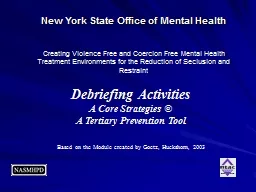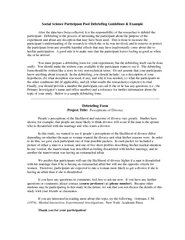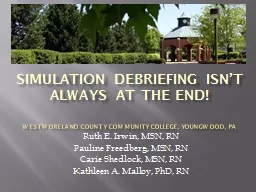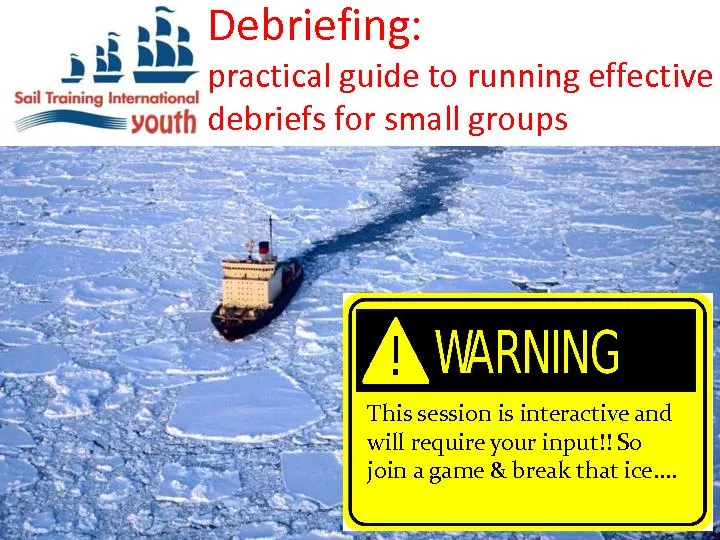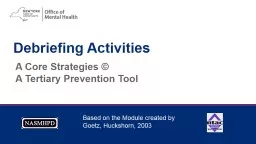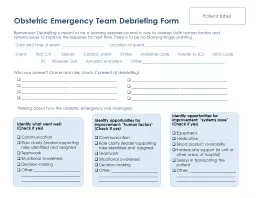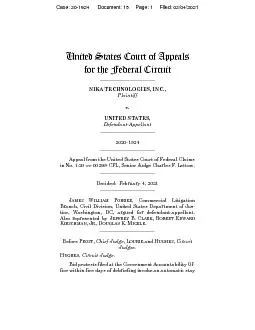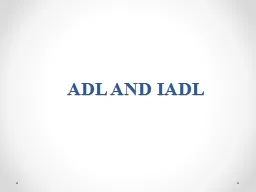PPT-Debriefing Activities
Author : karlyn-bohler | Published Date : 2016-03-15
A Core Strategies A Tertiary Prevention Tool Based on the Module created by Goetz Huckshorn 2003 New York State Office of Mental Health Creating Violence Free
Presentation Embed Code
Download Presentation
Download Presentation The PPT/PDF document "Debriefing Activities" is the property of its rightful owner. Permission is granted to download and print the materials on this website for personal, non-commercial use only, and to display it on your personal computer provided you do not modify the materials and that you retain all copyright notices contained in the materials. By downloading content from our website, you accept the terms of this agreement.
Debriefing Activities: Transcript
Download Rules Of Document
"Debriefing Activities"The content belongs to its owner. You may download and print it for personal use, without modification, and keep all copyright notices. By downloading, you agree to these terms.
Related Documents

